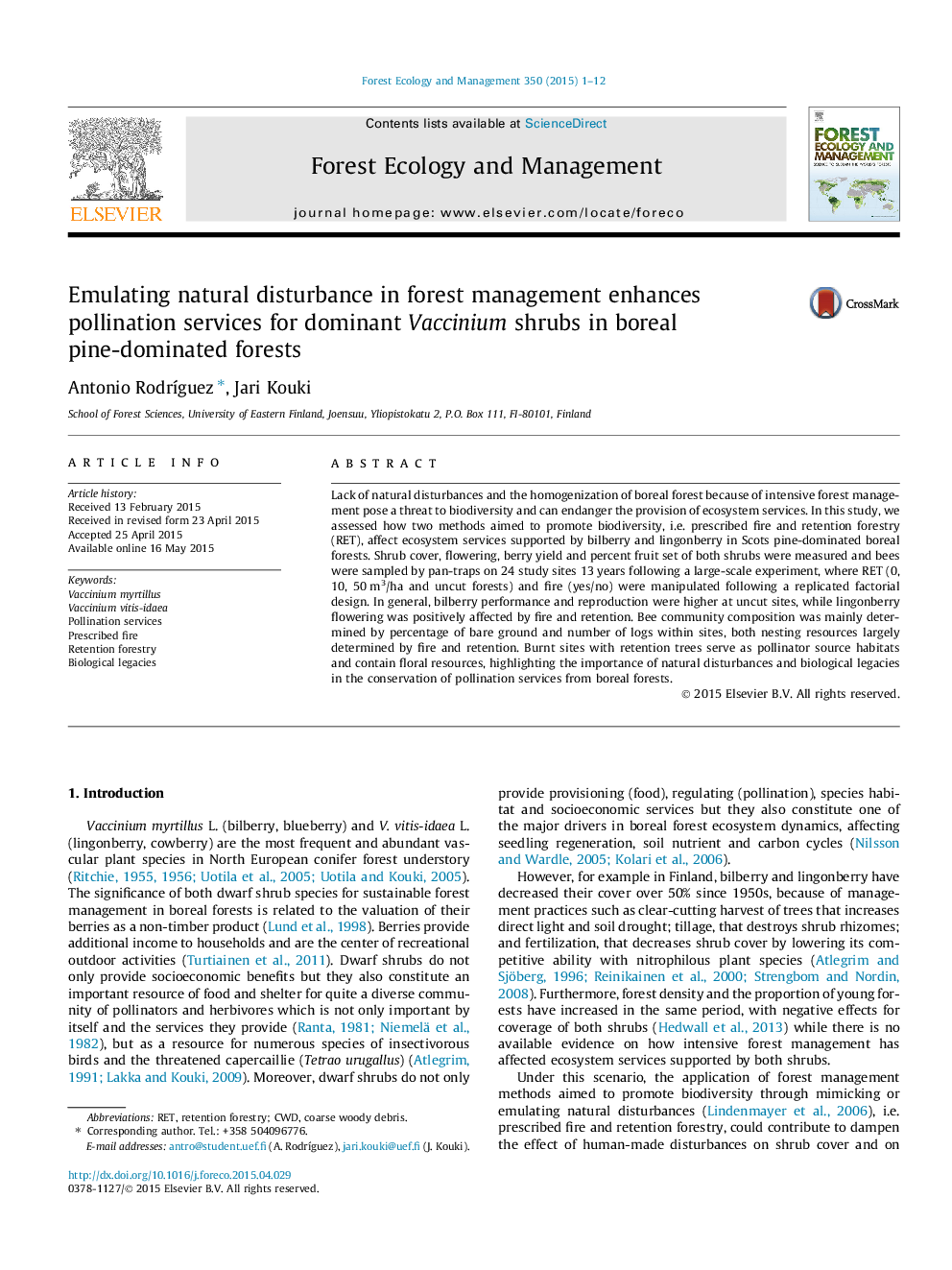| کد مقاله | کد نشریه | سال انتشار | مقاله انگلیسی | نسخه تمام متن |
|---|---|---|---|---|
| 86167 | 159169 | 2015 | 12 صفحه PDF | دانلود رایگان |

• We measured dwarf shrub responses to fire and retention 13 years post-treatment.
• We sampled bees to assess the effect of disturbance on pollination services.
• Both treatments were highly beneficial for lingonberry performance.
• Treatments increase bare ground and dead wood, providing nest resource for bees.
• We report how natural disturbance improves pollination services in boreal forests.
Lack of natural disturbances and the homogenization of boreal forest because of intensive forest management pose a threat to biodiversity and can endanger the provision of ecosystem services. In this study, we assessed how two methods aimed to promote biodiversity, i.e. prescribed fire and retention forestry (RET), affect ecosystem services supported by bilberry and lingonberry in Scots pine-dominated boreal forests. Shrub cover, flowering, berry yield and percent fruit set of both shrubs were measured and bees were sampled by pan-traps on 24 study sites 13 years following a large-scale experiment, where RET (0, 10, 50 m3/ha and uncut forests) and fire (yes/no) were manipulated following a replicated factorial design. In general, bilberry performance and reproduction were higher at uncut sites, while lingonberry flowering was positively affected by fire and retention. Bee community composition was mainly determined by percentage of bare ground and number of logs within sites, both nesting resources largely determined by fire and retention. Burnt sites with retention trees serve as pollinator source habitats and contain floral resources, highlighting the importance of natural disturbances and biological legacies in the conservation of pollination services from boreal forests.
Journal: Forest Ecology and Management - Volume 350, 15 August 2015, Pages 1–12